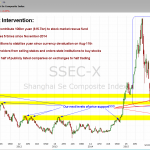During the financial crisis, BigSur Wealth Management’s clients grew weary of trying to grow their wealth in a highly volatile and poorly performing market.
As a result, the Miami-based firm and its clients–mostly wealthy families from Latin America–began exploring opportunities to invest in an asset class with low correlations to the stock and bond markets: commercial real estate.
Investing directly in such properties as apartment and office buildings–which produce steady income streams stemming from long-term contracts and leases–turned out to be popular with the firm’s clients, some of whom liked being able to inspect the properties themselves.
“Clients wanted to touch and feel the asset, they wanted direct exposure” without using a fund, says Rafael Iribarren, a managing partner at BigSur, which manages about $800 million. He heads up the firm’s real estate advisory unit.
Now roughly 10% of client investments are in commercial real estate, and Mr. Iribarren says they are expecting to boost that exposure to 14% or 15% in the next year or two.
“Our clients have been happy with our direct investments in core commercial real estate,” he says, noting that these investments with high occupancy and tenants with good credit quality typically yield returns in the high-single to low-double digits.
These days, amid low interest rates, an increasingly expensive U.S. stock market and choppy global economic growth, other financial advisers are looking to commercial real estate to boost returns for clients and diversify their portfolios.
According to a recent survey from BlackRock Inc., large institutional investors are likely to make significant shifts in asset allocation this year, and are showing greater interest in such physical assets as office buildings, bridges and roads.
“We’re in a low rate environment, so in this quest for yield, commercial real estate has hit a lot of radar screens as people are looking to enhance their income,” says Cliff Caplan, president of Neponset Valley Financial Partners in Norwood, Mass., which manages $80 million.
Depending on the client, Mr. Caplan says, he allocates anywhere from 5% to 10% of a portfolio to commercial real estate, primarily through real-estate investment trusts, or REITs.
REITs can be bought directly or through mutual funds or exchange-traded funds. Mr. Caplan notes that publicly traded REITs work well for some clients because of their accessibility and similarity to other publicly traded securities, making them easy for clients to understand. And REITs typically pay dividends that are much higher than the meager interest generated by most bonds, he adds.
Mr. Caplan also uses nontraded REITs, which raise money to buy commercial properties and then sell their shares directly to investors. He points out that regulators tend to look very closely at these products due to their higher fees, relative illiquidity, and perceived greater risk.
Mr. Iribarren, for his part, says his clients prefer more direct exposure by co-investing with institutional asset managers rather than investing in funds, including REITs. This way, he says, clients have more control over the asset. For instance, they would have a right to vote in decisions being made about the property, such as whether to sell the asset or make improvements, and they would also get more direct interaction with the property managers. Also, by avoiding REITs the clients won’t be exposed to a host of other properties they have no interest being in.
Read more: Boosting Returns with Commercial Real Estate












Leave A Comment